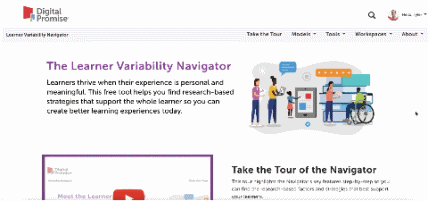Direct Instruction: Internet Search
Overview
Teaching students how to effectively search the internet is critical for helping them learn how to find accurate and relevant information and aids in developing information literacy. Students need to learn to draw upon their Background Knowledge to frame a good research question, generate associated Vocabulary, and create a search string that can provide relevant information. This task can be heavy on students' Working Memory, so explicit teaching of search skills such as utilizing quotation marks, asterisks, and connecting words can help alleviate that load.
Example: Use This Strategy In in the Classroom
Design It into Your Product
Factors Supported by this Strategy
More Instructional Approaches Strategies
When adolescents can connect and communicate with authentic audiences about their interests and values, reading and writing become more personally meaningful and relevant.
As part of a varied curriculum, explicit instruction in reading comprehension strategies from teachers can help older students use strategies meaningfully and flexibly.
Seeing and using new words repeatedly and in many contexts is critical for Vocabulary acquisition.
Research shows that, along with traditional reading comprehension strategies, students use unique strategies to read the non-linear, hyperlinked structure of online texts.
Explicitly teaching strategies for planning, writing, and revising texts improves students' writing quality.
Interpreting and composing discipline-specific texts requires tailoring literacy strategies, like annotating or asking questions, to the disciplinary goals and practices.
During guided inquiry, teachers foster student autonomy by designing lessons centered on meaningful questions in which students locate, analyze, and present relevant information on their own or in small groups.
Independent reading promotes literacy by emphasizing student choice with teacher support in selecting books, as well as setting the expectations that everyone is a reader.
By observing, rereading, and closely analyzing published writing, students see examples and learn the strategies of good writing that they can integrate into their own Composition.
Through short but regular mindfulness activities, students develop their awareness and ability to focus.
Instruction in multiple formats allows students to activate different cognitive skills and Background Knowledge that are necessary to remember procedural and content information.
Using multiple methods of assessment can help educators gain a comprehensive understanding of learner progress across a wide range of skills and content.
Providing multiple texts on the same topic or theme allows students to interact with multiple perspectives and develop their critical thinking skills.
When teachers ask questions or have students create questions before introducing a text, they activate student interest and help them assess what they already know about a given topic.
Providing guiding prompts and questions for students to use when reading or participating in discussions deepens their understanding of texts and gives them space to question and grapple with issues of power, justice, and equity.
When teachers provide students with model texts for their writing, they learn to identify effective elements to incorporate into their own writing.
Teachers can provide individualized support through one-on-one conferences to assess reading comprehension, understanding of content, and spark further interest in reading.
A strengths-based approach is one where educators intentionally identify, communicate, and harness students' assets, across many aspects of the whole child, in order to empower them to flourish.








